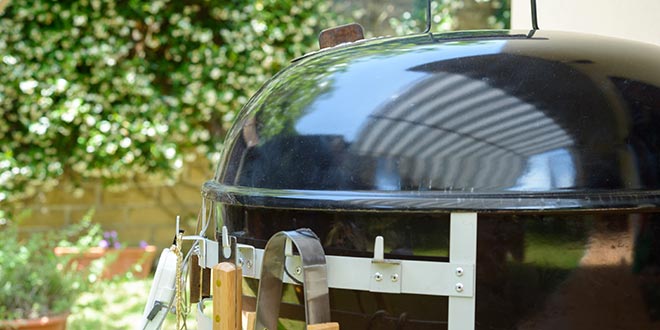May Means National Barbecue Month
The weather is growing warmer, and lovers of the backyards all over North America are starting to crack their patio doors. Greeting them will be (or should be) a slightly smoky vista flavored with hickory, mesquite and other amazing varieties of woods that can impart barbecue with great depth of flavor.
With the month of May being National Barbecue Month, it’s time for retailers to put their best outdoor cooking products front and center. There will be plenty of consumers looking for the best in offset smokers, wood supplies and recipe books, and if a store is able to carry these specialized tools, it should. Yet that leaves out a far larger demographic.
What about the vast majority of consumers who want to try out a new barbecue recipe but are more familiar with traditional, high-heat grilling techniques? A retailer should have the products, and the basic knowledge, at hand to help these backyard cooks put out a feast no matter what equipment they’re working with.
What Can Make Barbecue
Smokers in all varieties offer great options in imparting smoky goodness to meats, vegetables and anything else needed for proper barbecue. The low heat and longer cooking times necessary to create this kind of barbecue lend themselves to these culinary beasts, but their specialized nature and prices put them out of the range for a large number of consumers.
With a little knowledge and a few tools, most gas and charcoal grills can be converted into smokers ready to take on any recipe. Key factors include size for these grills, with larger equipment offering a better chance of creating a key ingredient to smoking: indirect heat.
No Direct Path
Indirect heat is the key to low and slow cooking, the kind that can let a slab of ribs cook for hours while remaining moist and soaking in the smoke’s flavor. For larger charcoal grills, this can be accomplished by letting the charcoal ignite in a chimney, then piling the charcoal on one side of the grill. For grills with enough space, two piles can be made on each side of the grill, with a space in the middle. Either way, place the meat being smoked so it isn’t directly on top of the coals. Wood chips, after being soaked and drained, can be placed directly on the coals to produce the smoke.
For gas grills, the method of generating indirect heat is dependent on the number of burners. Four is ideal to maintain the right temperature, but a three-burner grill can do the job. Turning the burner furthest to one side to high and the next closest to the center to low can provide a nice area to the opposite of the heat for the barbecue to go. For smaller grills with two burners, another method is to place disposable roasting pans filled part way with water on top of the burners, with the grill placed over the pans and the meat placed on the grill. The water helps absorb the direct heat from the burners, and the low temperature of barbecue won’t boil the water and introduce steam, which will interfere with the smoking.
Gas grills sometimes come equipped with built-in wood delivery systems, often a drawer or a box that can be filled with wood chips or pellets. Consumers hoping to use a gas grill to smoke meats can often be directed to these grills, or wood boxes that are designed to fit with multiple grill styles can be stocked and ready for a new barbecue enthusiast.
One Stop Shop
Whether it’s stocking a full smoking setup worthy of the best barbecue competitions or finding a way to expand the capabilities of the basic charcoal grill, a retailer serious about backyard entertaining can be ready. Make sure your well stocked in the necessary consumables such as charcoal (both lump and briquettes), wood in varieties of flavors and types (the most common being logs, chips and pellets) and propane tanks. Be ready with dedicated products for smoking and barbecuing as well as the add-on items that can expand normal grills to accomplish the task.
With a little help from an independent hardware retailer, any barbecue challenge in May can be met.
 Hardware Retailing The Industry's Source for Insights and Information
Hardware Retailing The Industry's Source for Insights and Information





